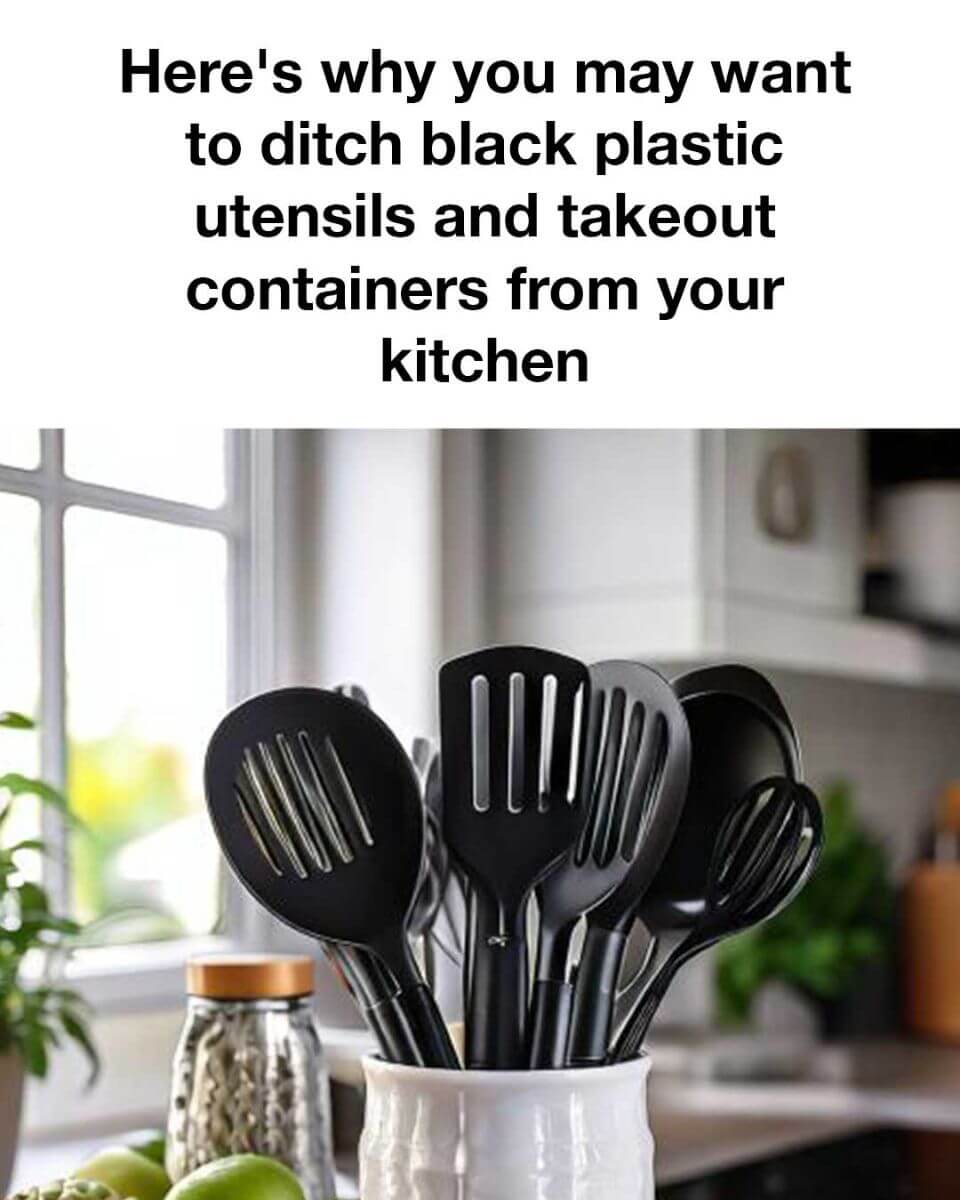Black plastic utensils and takeout containers have become widespread in kitchens and restaurants because of their convenience and affordability. Their sleek look and ability to mask stains make them popular choices. However, growing concerns about their environmental and health effects have led many to rethink using black plastic in their homes.
Environmental Concerns of Black Plastic
Black plastic poses significant challenges for recycling due to its color. The black pigment, typically carbon black, cannot be detected by the optical sorting systems in recycling centers. As a result, black plastic often ends up in landfills, where it can take centuries to break down. Moreover, manufacturing black plastic contributes to pollution and the depletion of natural resources, heightening its environmental impact.
Health Risks Linked to Black Plastic
Using black plastic utensils and containers may also carry health risks. Some contain harmful chemicals like bisphenol A (BPA) and phthalates, which can leach into food, especially when heated. These substances have been associated with hormonal imbalances and an increased risk of certain cancers. Increasingly, consumers are looking for safer alternatives. Black plastics are often made from recycled electronic waste (e-waste), which may contain toxic chemicals and heavy metals such as brominated flame retardants, lead, and cadmium. A 2024 Chemosphere study highlighted that these plastics can release toxins when heated or exposed to acidic substances, making them particularly unsafe for food use.
Difficulties in Recycling Black Plastic
Recycling black plastic presents major obstacles. The carbon black pigment absorbs light, rendering it invisible to sorting machines at recycling facilities. Consequently, much of it is diverted to landfills, contributing to pollution and wasting recyclable material.
Sustainable Alternatives to Black Plastic
Several environmentally friendly alternatives to black plastic utensils and containers exist. These include reusable options made from stainless steel, glass, bamboo, or biodegradable substances. Such alternatives are not only more sustainable but tend to be more durable and visually appealing. Many restaurants now provide compostable or recyclable packaging for takeout, and customers can bring their own containers to minimize waste.
Advantages of Choosing Eco-Friendly Products
Opting for eco-friendly utensils and containers offers multiple benefits. Environmentally, it lowers landfill waste and reduces reliance on non-renewable resources. From a health perspective, it decreases exposure to harmful chemicals sometimes found in plastics. Economically, reusable items often save money in the long run due to their durability compared to disposable products.
How to Phase Out Black Plastic at Home
Reducing black plastic use in your kitchen can be done gradually. Begin by evaluating your current supplies and identifying which items can be replaced with sustainable alternatives. Invest in reusable utensils and containers, seek out local programs that recycle black plastic, and spread awareness about reducing plastic waste. Encourage restaurants and takeout services to provide eco-conscious options.
Conclusion: Choosing Sustainability for a Better Future
Eliminating black plastic utensils and takeout containers is a small yet impactful step toward living more sustainably. By selecting eco-friendly products, you help lower your environmental footprint and protect your health. As more people adopt these choices, demand for sustainable goods will increase, driving positive change in production and consumption. Together, we can foster a healthier planet for generations to come.
